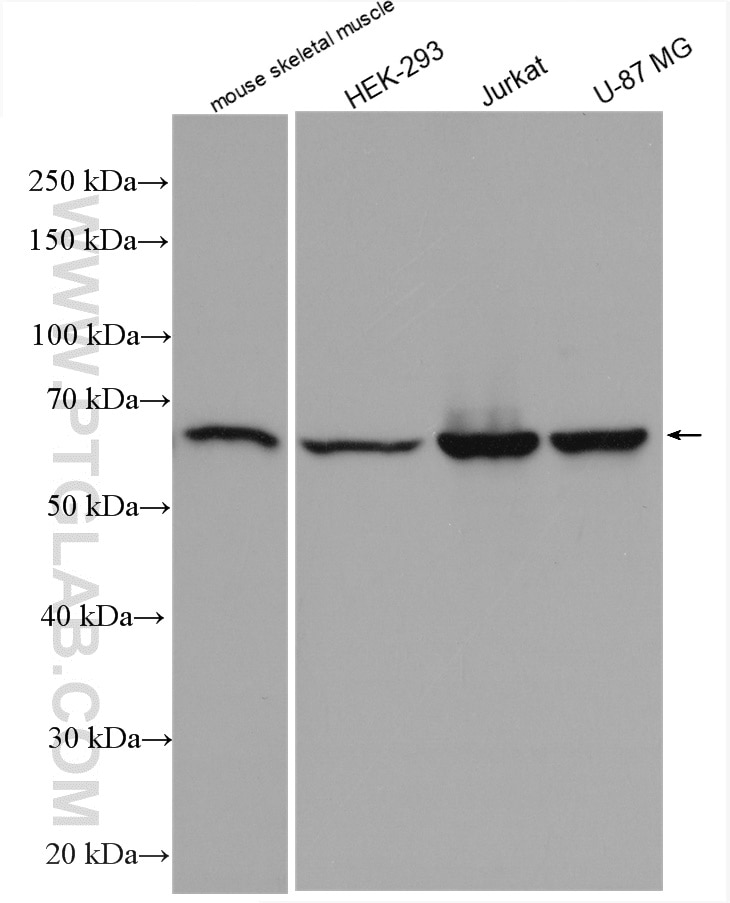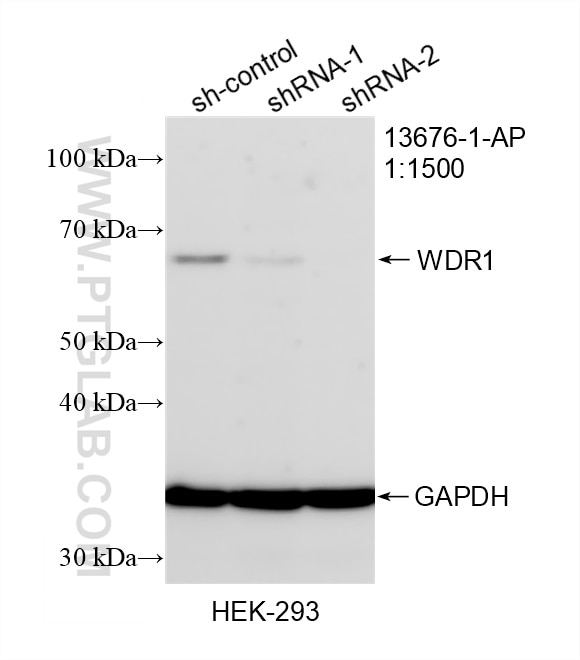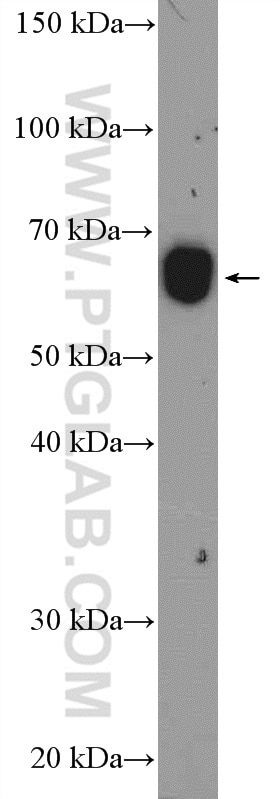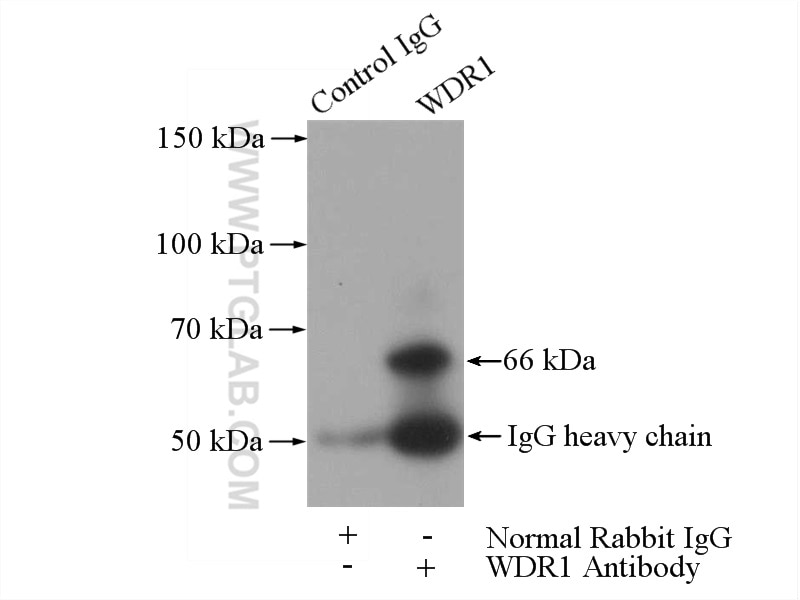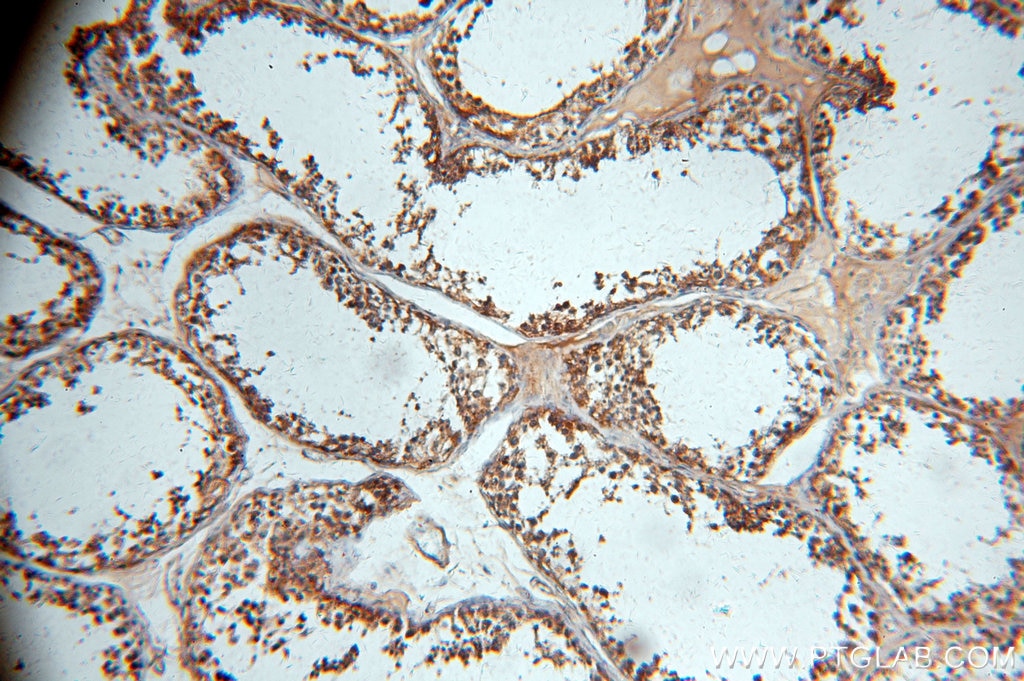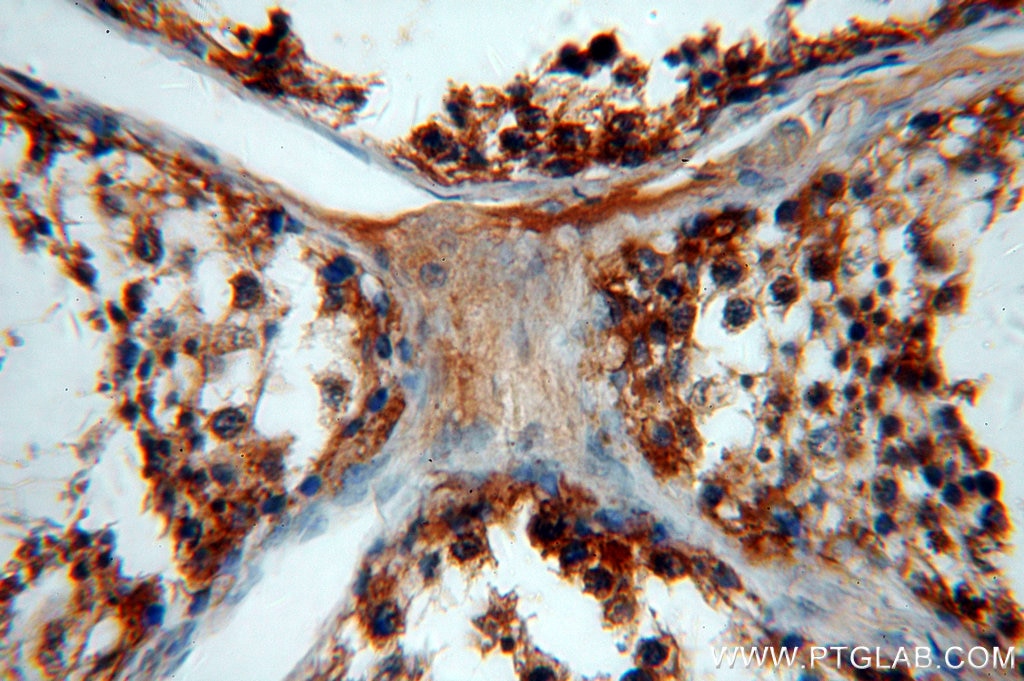- Phare
- Validé par KD/KO
Anticorps Polyclonal de lapin anti-WDR1
WDR1 Polyclonal Antibody for WB, IP, IHC, ELISA
Hôte / Isotype
Lapin / IgG
Réactivité testée
Humain, rat, souris
Applications
WB, IP, IHC, ELISA
Conjugaison
Non conjugué
N° de cat : 13676-1-AP
Synonymes
Galerie de données de validation
Applications testées
| Résultats positifs en WB | cellules HEK-293, cellules Jurkat, cellules U-87, muscle squelettique de souris, tissu de muscle squelettique de rat |
| Résultats positifs en IP | tissu de muscle squelettique de souris |
| Résultats positifs en IHC | tissu testiculaire humain il est suggéré de démasquer l'antigène avec un tampon de TE buffer pH 9.0; (*) À défaut, 'le démasquage de l'antigène peut être 'effectué avec un tampon citrate pH 6,0. |
Dilution recommandée
| Application | Dilution |
|---|---|
| Western Blot (WB) | WB : 1:500-1:3000 |
| Immunoprécipitation (IP) | IP : 0.5-4.0 ug for 1.0-3.0 mg of total protein lysate |
| Immunohistochimie (IHC) | IHC : 1:20-1:200 |
| It is recommended that this reagent should be titrated in each testing system to obtain optimal results. | |
| Sample-dependent, check data in validation data gallery | |
Applications publiées
| KD/KO | See 5 publications below |
| WB | See 9 publications below |
Informations sur le produit
13676-1-AP cible WDR1 dans les applications de WB, IP, IHC, ELISA et montre une réactivité avec des échantillons Humain, rat, souris
| Réactivité | Humain, rat, souris |
| Réactivité citée | Humain, souris |
| Hôte / Isotype | Lapin / IgG |
| Clonalité | Polyclonal |
| Type | Anticorps |
| Immunogène | WDR1 Protéine recombinante Ag4670 |
| Nom complet | WD repeat domain 1 |
| Masse moléculaire calculée | 606 aa, 66 kDa |
| Poids moléculaire observé | 66-70 kDa |
| Numéro d’acquisition GenBank | BC030541 |
| Symbole du gène | WDR1 |
| Identification du gène (NCBI) | 9948 |
| Conjugaison | Non conjugué |
| Forme | Liquide |
| Méthode de purification | Purification par affinité contre l'antigène |
| Tampon de stockage | PBS avec azoture de sodium à 0,02 % et glycérol à 50 % pH 7,3 |
| Conditions de stockage | Stocker à -20°C. Stable pendant un an après l'expédition. L'aliquotage n'est pas nécessaire pour le stockage à -20oC Les 20ul contiennent 0,1% de BSA. |
Informations générales
WDR1, which belongs to the WD repeat AIP1 family, also known as AIP1, is a 606 amino acid protein that localizes to the cytoskeleton. WD repeats are approximately 30- to 40-amino acid domains containing several conserved residues, mostly including a trp-asp at the C-terminal end. WDR1 induces the disassembly of actin filaments in conjunction with ADF/cofilin family proteins (PMID:15629458, 27557945, 29751004). WDR1 mutations may impair the ability of WDR1 to regulate cofilin-mediated actin depolymerization, and are associated with periodic fever, immunodeficiency, and thrombocytopenia syndrome (PMID: 27557945,27994071,29751004).
Protocole
| Product Specific Protocols | |
|---|---|
| WB protocol for WDR1 antibody 13676-1-AP | Download protocol |
| IHC protocol for WDR1 antibody 13676-1-AP | Download protocol |
| IP protocol for WDR1 antibody 13676-1-AP | Download protocol |
| Standard Protocols | |
|---|---|
| Click here to view our Standard Protocols |
Publications
| Species | Application | Title |
|---|---|---|
Cell Death Dis AIP1-mediated actin disassembly is required for postnatal germ cell migration and spermatogonial stem cell niche establishment. | ||
J Biol Chem Trp-Asp (WD) repeat domain 1 is Essential for Mouse Peri-implantation Development and Regulates Cofilin Phosphorylation. | ||
Am J Pathol A Cardiomyocyte-Specific Wdr1 Knockout Demonstrates Essential Functional Roles for Actin Disassembly during Myocardial Growth and Maintenance In Mice.
| ||
Mol Cells WD Repeat Domain 1 Deficiency Inhibits Neointima Formation in Mice Carotid Artery by Modulation of Smooth Muscle Cell Migration and Proliferation.
| ||
Int J Biol Sci WDR1 Promotes Cell Growth and Migration and Contributes to Malignant Phenotypes of Non-small Cell Lung Cancer through ADF/cofilin-mediated Actin Dynamics.
| ||
Dev Biol WDR1-regulated actin dynamics is required for outflow tract and right ventricle development.
|
